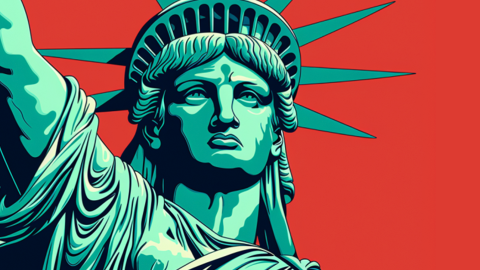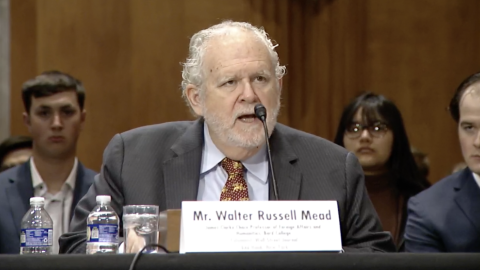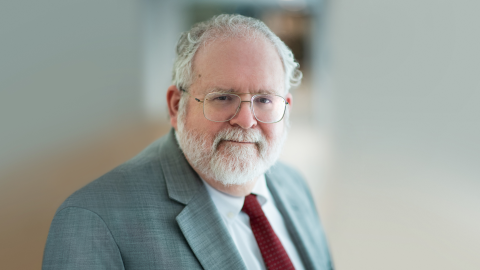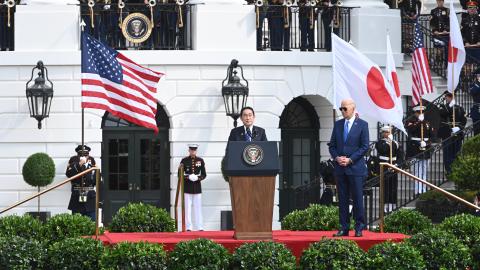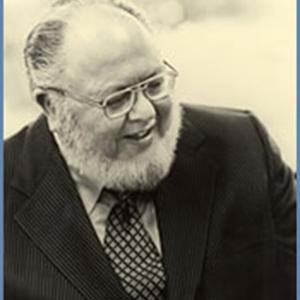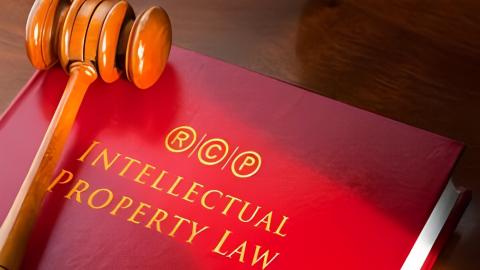California is poised to become the third state to enact a right to repair law aimed at making it easier for independent repair shops and consumers to repair electronic devices. This might sound well and good—until you think about what it actually means for IP owners. While repair advocates may not care about, or even acknowledge, the IP side of the equation, the not-so-hidden truth of the right to repair movement is that it expands repair opportunities for consumers by taking away the rights of copyright and patent owners. Indeed, the foundational premise of the repair movement is that there is something inherently wrong when an IP owner exercises its right to exclude and imposes a repair restriction. Of course, this lopsided view elevates access over incentives, and it ignores how IP law itself promotes the public good by rewarding creators and innovators for their individual efforts. But, more importantly, it’s not up to the states to second-guess Congress’s judgment. The policy debates over the protections and remedies accorded to copyright and patent owners typically take place at the federal level for good reason. Under the Supremacy Clause, states are powerless to enact laws that conflict with federal laws, including the Copyright and Patent Acts. The problem with California’s new Right to Repair Act, which now awaits Governor Newsom’s signature to become law, is that it purports to eliminate rights that Congress has explicitly granted to IP owners.
The Historical Right to Repair Doctrine
Let’s start with some basics. The term “right to repair” is highly misleading, at least in the strict sense. A “right” is a legally enforceable claim against one who has the duty to do, or not do, a given act, and the violation of a right is an infringing wrong. Owners of electronic devices have no right to repair them because IP owners have no duty to help them. On the contrary, device owners have the duty not to violate the rights of IP owners when making repairs. The historical right to repair doctrine comes from patent law, and the courts have long recognized that the owner of a patented article can replace the unpatented parts as they become worn. The leading case is Wilson v. Simpson, where the Supreme Court held in 1850 that the unpatented cutting blades of a patented planing machine could be replaced because the “right to repair” inherently exists as “the exercise of that right of care which every one may use to give duration to that which he owns.” However, the Court noted a fundamental distinction between permissible repair, which restores the serviceability of a machine, and impermissible reconstruction, which creates a new machine and thus constitutes patent infringement. This flows from the exhaustion doctrine. The owner of a patented machine can repair it because the authorized sale exhausts the patent owner’s right to exclude others from using that particular article. But the machine owner can’t reconstruct a new one since the patent owner retains the right to exclude others from making the invention.
The historical right to repair doctrine is thus quite modest. It merely provides that the lawful owner of a patented combination can replace the unpatented parts when they break. But it’s not, strictly speaking, a right—it’s a privilege that arises in the absence of the patent owner’s right to exclude others from using a particular patented machine. The doctrine also exists in copyright law, where it is likewise circumscribed by the rights of copyright owners. In 1901, for instance, the Seventh Circuit held in Doan v. American Book that the “right of repair” permitted the owner of a book that had become worn through use “the right to maintain the book as nearly as possible in its original condition, so far, at least, as the cover and binding of the book is concerned.” The historical right to repair cases align with our intuitive sense that, as one of the normal incidents of ownership, we can fix our tangible property when it breaks. Once an IP owner parts with title to a particular copyrighted work or patented machine, the new owner has the ability to transfer ownership to someone else and to preserve its fitness for use given the inevitable wear and tear. The modern right to repair movement, by contrast, envisions something very different. It would replace the right to exclude granted by federal law to copyright and patent owners with the duty to include others in their otherwise protected works and inventions.
The Modern Right to Repair Movement
For all the talk about the “right” to repair, one might think that supporters are fighting hard to enforce the preexisting right of consumers to repair their electronic devices. This sleight of hand obscures the less palatable truth that repair advocates have invented this supposed right out of whole cloth—and it comes at the expense of IP owners whose rights are concomitantly weakened. Take, for example, the letter submitted last week by the Center for Democracy & Technology (CDT) urging Governor Newsom to sign the California Right to Repair Act into law. CDT claims it “affirms the right of consumers to get their electronics-enabled devices repaired by the repair service provider of their choosing.” But the fact that the law would have to be changed for this alleged right to become enforceable makes the rhetorical maneuver easy to perceive. The Right to Repair Act would not affirm the right to repair; it would create it. Such misdirection aside, there is no denying that the modern right to repair movement has gained significant momentum over the past couple of years. In July 2021, President Biden issued an executive order directing the Federal Trade Commission (FTC) to address “unfair anticompetitive restrictions” in the repair marketplace, and less than two weeks later, the FTC published a policy statement promising to “prioritize investigations into unlawful repair restrictions.”
These proposals for the FTC to clamp down on IP owners for allegedly abusing their rights haven’t gone far. To date, the FTC has only brought three actions under the Magnuson-Moss Warranty Act, which prohibits manufacturers from conditioning a warranty on a consumer’s use of particular parts and services. The FTC has yet to go after an IP owner for merely asserting its right to exclude—and rightfully so. The myth of the right to repair movement is that IP owners are somehow wrong to limit competition when they exercise their federally granted right to exclude competitors. But the siren calls of repair supporters have proved too alluring. For instance, the FTC’s policy statement claims there is evidence that manufacturers are “asserting patent rights” in “an unlawful, overbroad manner.” This supposed evidence comes from two comments that were submitted as part of the FTC’s Nixing the Fix study on repair restrictions. But the comments boil down to the unremarkable point that patent owners can exclude others from making and selling their patented parts. The only alleged abuse was the fact that patent rights were being obtained and asserted against would-be competitors, which is nowhere close to unlawful conduct under the competition laws. Indeed, IP and antitrust law work in tandem to promote the public good through ensuring a competitive economy—not to subsidize the business models of free riding second-comers.
The California Right to Repair Act
Introduced by Senator Susan Eggman as Senate Bill 244 in January 2023, the California Right to Repair Act has been overwhelmingly approved by the state legislature, and it currently awaits Governor Newsom’s signature to become law. Despite previous attempts that died in committee, Senator Eggman’s newfound success is likely due to the repair movement’s recent momentum. Several bills have been introduced at the state and federal level, and two states—New York and Minnesota—have passed laws based on the legislative template put forth by the Repair Association. The Right to Repair Act cribs from the same source, but the main operative provisions are tailored to match those of the state’s Song-Beverly Consumer Warranty Act, which requires manufacturers to “make available to service and repair facilities sufficient service literature and functional parts to effect the repair of a product” if it offers an express warranty. Importantly, a manufacturer is only obligated to make these things available to its own repair facilities, or ones that it authorizes, and the term of the obligation depends on the product’s wholesale price. The Right to Repair Act would greatly expand this framework by requiring manufacturers to make available repair tools, parts, and know-how to all repair shops, whether authorized or not, and consumers “on fair and reasonable terms,” and the obligation arises irrespective of the existence of a warranty or federal IP protection.
The California Right to Repair Act is undoubtedly unconstitutional under the Supremacy Clause because it conflicts with the Copyright and Patent Acts. Among the things that IP owners would have to make available are parts protected by utility and design patents, copyrighted computer programs, and the keys to bypass technological measures that prevent unauthorized access to copyrighted works. When the parts, tools, and know-how are protected by federal IP law, a state is powerless to dictate whether a manufacturer makes them available—and at what price. Under conflict principles, a state law is preempted when it “stands as an obstacle to the accomplishment and execution of the full purposes and objectives of Congress.” The conflict here is obvious: Congress grants copyright and patent owners the right to exclude others, and the Supreme Court has long held that an IP owner can “use or not use it, without question of motive.” An IP owner can refuse to sell its copyrighted works and patented machines during the term of protection, and it can refuse, even arbitrarily, to grant licenses to others to exploit them. Congress intends for copyright and patent owners to have no duty to make these things available, yet the Right to Repair Act would subject them to state liability for merely exercising their federal right to exclude. The requirement that IP-protected tools, parts, and know-how be made available “on fair and reasonable terms” is likewise preempted. As the Supreme Court has long recognized, IP owners are “free to set the price and negotiate contracts with purchasers” because it “allows them to secure the financial rewards,” which in turn “promotes the progress of science and the useful arts.”
The IP Professors’ Misleading Comments
While it’s unfortunate that the California Right to Repair Act would thwart the very purpose of IP law by denying copyright and patent owners their federally granted rights, it’s also somewhat understandable. In a bill analysis submitted to a Senate committee this past April, Senator Eggman relies heavily on the misguided claims of repair advocates that IP owners are abusing their rights when they impose repair restrictions as reflected in the FTC’s Nixing the Fix study. But far less understandable—and far more troublesome—is that the state legislators appear to have been misled by a group of 12 IP professors who filed comments claiming that the Right to Repair Act is perfectly fine under the Copyright and Patent Acts. While the comments themselves are not available, they are quoted at length in a bill analysis prepared for an Assembly committee this past June. The analysis summarizes the IP professors’ comments as demonstrating that “both copyright and patent law recognize exceptions for repair,” and it identifies the authors to include “such luminaries” as Mark Lemley, Pamela Samuelson, and Rebecca Tushnet. But while federal IP law contains limited exceptions to facilitate repairs, the purpose of the Right to Repair Act is to change the law because those exceptions are not nearly so broad.
Here’s what the IP professors say about the Copyright Act, as quoted in the bill analysis (with one typographical error corrected):
As early as 1901, courts have recognized a “right of repair or renewal” under U.S. copyright law. Doan v. American Book Co., 105 F. 772 (7th Cir. 1901). Since then, courts have repeatedly brushed back efforts to use copyright law to control the markets for repair parts and information. See ATC Distribution Grp., Inc. v. Whatever It Takes Transmissions & Parts, Inc., 402 F.3d 700, 703 (6th Cir. 2005) (holding part numbers and technical illustrations unoriginal) […]
It’s not just the courts that have rejected these efforts. In amending § 117 of the Copyright Act, Congress explicitly embraced repair. See § 17 U.S.C. 117(c). And more recently, the Copyright Office has recognized that repairing a range of software-enabled devices, from smartphones to tractors, is non-infringing activity. See Exemption to Prohibition on Circumvention of Copyright Protection Systems for Access Control Technologies, 86 Fed. Reg. 206, 59627 (October 28, 2021).
Facilitating the repair of consumer devices is consistent with federal copyright law and policy. SB 244 is in no way preempted by the Copyright Act, which merely prohibits states from enacting exclusive rights “equivalent” to those provided under federal law. 17 U.S.C. § 301(a). Nor does SB 244 conflict with § 1201 of the Copyright Act. […]
While the first two paragraphs are generally true, the final paragraph’s conclusion on preemption is not. As noted above, the Doan case held that the owner of a book can repair the cover and binding that are worn through use. The ATC Distribution Group decision held that there was no copyright infringement because the allegedly infringed works were not eligible for protection. Section 117(c) allows some copying of computer programs for repairs, and the recent triennial rulemaking recognizes a limited exemption to the prohibition against circumventing an access control because some repairs are likely fair use. But the Right to Repair Act is not “consistent with federal copyright law and policy” just because it facilitates repairs. On the contrary, it is inconsistent with Congress’s judgment because it purports to take away the rights that Congress intends to remain in place. The IP professors’ citation to the Copyright Act’s express preemption provision in Section 301(a) is telling. That provision is typically invoked against a copyright owner, such as when a defendant argues that the copyright owner’s state breach of contract claim is really a copyright claim in disguise. The issue here is conflict preemption, where the copyright owner argues that the state law itself unconstitutionally conflicts with federal law. And the notion that forcing copyright owners to provide the keys to bypass technological measures that secure access to copyrighted works does not conflict with Section 1201 is pure applesauce.
The IP professors fare no better with their comments quoted in the analysis of the bill on the Patent Act implications:
If anything, the rules favoring repair under patent law are even clearer. Under the exhaustion doctrine, when a patentee sells a particular device to a consumer, it loses the right to control the use or subsequent transfer of that device. Exhaustion is why you can sell your used car without the manufacturer’s permission. It’s also why you can repair it free from any risk of patent liability. So long as you don’t “reconstruct” the patented article—that is, rebuild it entirely—there is simply no infringement. See Aro Mfg. Co., Inc. v. Convertible Top Co., 365 U.S. 336 (1961). More recently, the Supreme Court made clear that manufacturers cannot leverage their patent rights to restrict the repair of the devices they sell. Impression Prods., Inc. v. Lexmark Int’l, Inc., 581 U.S. ___ (2017).
While it’s anyone’s guess why the IP professors omit the page number in their citation to a Supreme Court decision from 2017, it requires no guesswork to explain how this paragraph entirely misses the point. Unlike the Copyright Act, there is no express preemption provision under the Patent Act to confuse the issue of whether the state is creating—or destroying—a right granted to patent owners. The misdirection here is the relevancy of patent law’s exhaustion doctrine. The IP professors are correct that, as noted above, the lawful owner of a particular patented machine can repair it because the authorized sale exhausts the patent owner’s right to exclude others from using it. And they correctly identify the fundamental distinction, as reiterated in the Supreme Court’s 1961 decision in Aro Manufacturing, between permissible repair and impermissible reconstruction. But the citation to Impression Products gives away the game—and perhaps that’s why they don’t cite it more fully. That’s an exhaustion doctrine case, and the Court held that post-sale restrictions are unenforceable as a matter of federal patent law once there’s an authorized first sale, whether domestically or abroad. But the issue here is not what consumers can do on the receiving end of an authorized sale; it’s whether states can force that sale to occur in the first place.
States Can’t Simply Rewrite Federal IP Law
The modern right to repair movement represents a sea change to the existing limitations on the protections and remedies provided to copyright and patent owners by federal law under the Copyright and Patent Acts—as well as the limitations identified by the historical right to repair doctrine that the courts have long recognized. But repair supporters would haphazardly remove the federally granted right of IP owners to exclude others from utilizing their protected works and inventions and replace it with the newly created duty of IP owners to make them available on terms dictated by the whims of state legislatures. This is contrary to the Constitution’s empowerment of Congress alone to enact IP laws with nationwide uniformity and effect, and it directly contradicts the scheme that Congress has expressly adopted that carefully delimits the contours of the exclusive rights granted to copyright and patent owners. Rather than acknowledge the obvious discrepancies, repair supporters appear to have adopted the view that federal IP law doesn’t matter when repair opportunities are at stake. And this view appears to have been driven home by several prominent IP professors. But the fact remains that California can’t simply rewrite federal IP law—the Constitution doesn’t allow it.
